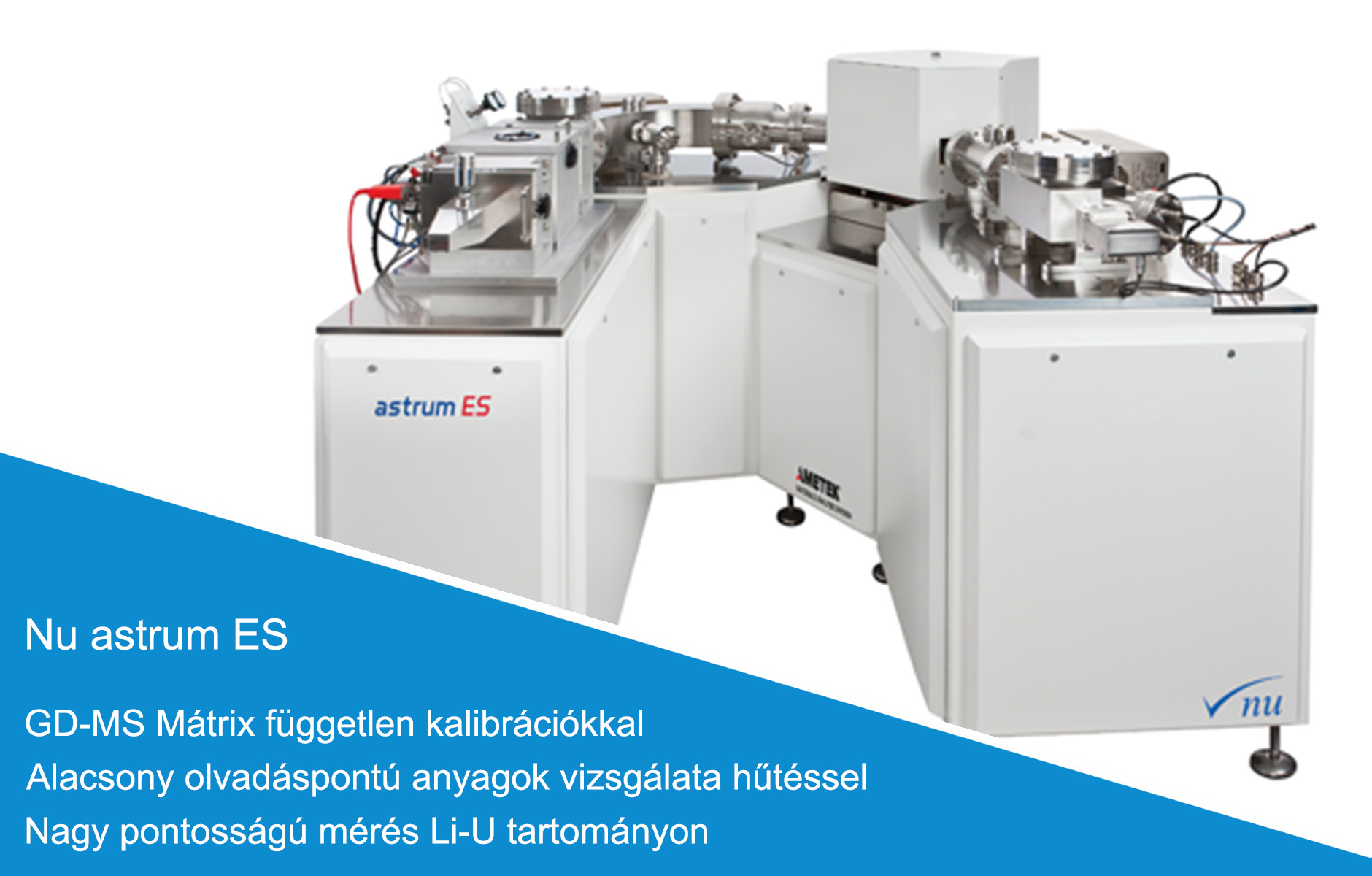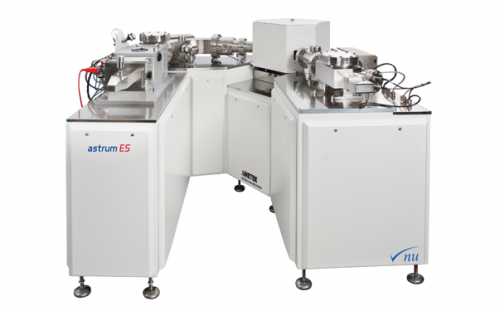Nu Instruments GD-MS Spektrométer
Glow discharge is a plasma formed by applying a voltage between two metal electrodes through a low-pressure gas. As this gas ionises, it impacts with the cathode (sample) to sputter material off the surface which is subsequently ionised and directed into the mass spectrometer for quantification. Both bulk and depth-profiling analyses over a wide range of matrices are possible.
A sample for Nu instruments GD-MS is prepared as either a flat sample of a few mm2 (up to approx. 30x3Omm and from thin foils to about 20mm depth, the sample must be flat enough to form a gas seal against the surface) or as a pin sample with maximum dimensions 3mm OD and 23mm long. To produce a discharge, the sample must be conducting, however for non-conducting samples an analysis can be achieved by binding or pressing pieces of non-conducting material or powder into a sacrificial high purity conductor (e.g. 7n Indium). The sample cell is cryogenically cooled which allows analysis of low-melting point materials and reduces the interferences from gas background species.
The discharge itself is generated by applying a large DC potential between the sample and the cell exit aperture with a small amount of argon present (e-1 to e-2mbar pressure). The argon ionizes and sputters material from the sample which is then ionized itself. This separation of sputtering and ionization in both space and time minimises matrix effects. After the sample cell, the positive ions from the discharge are accelerated and focused onto the source slit of the mass spectrometer. The mass spectrometer is a forward geometry Nier-Johnson double-focussing magnetic sector with the characteristic of flat top peaks at a resolution of 300. The flat top peaks are used for tuning but virtually all analysis is undertaken at 4000 resolution which eliminates most of the interferences seen in GD-MS.


